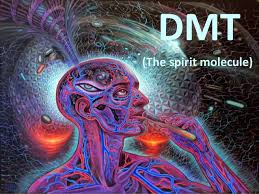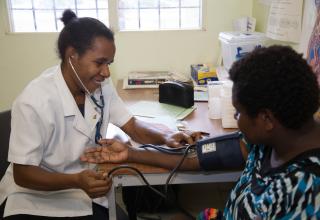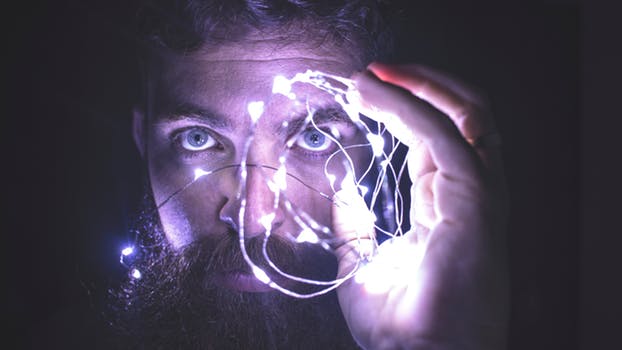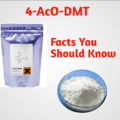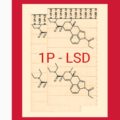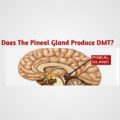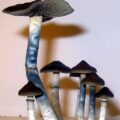What is DMT
DMT is the short form of N, N-Dimethyltryptamine, a white crystalline naturally occurring powder found in plants such as Psychotria viridis and Banisteriopsis caapi. It is a hallucinogenic tryptamine popularly known as ” the spirit molecule” as a result of the intense psychedelic experience its administration elicits.

Uses of DMT
Medically, the DMT drug has no recognized use, and the complete lack of accepted safety parameters for the use of this drug makes it a dangerous substance to use. DMT is the active ingredient in ayahuasca, a traditionally brewed tea in South America.
Short-Term Effects Of DMT
As a recreational drug, DMT has the potential to produce very intense visual hallucinations. Other descriptions for the DMT high include:
-“Rushing” sensation.
– Elevated mood.
– Increased energy.
– Boost libido.
– Improved concentration.
– Heightened sense of empathy.
– The altered concept of time.
Is DMT legal in the United States?
In the United States, it is illegal to manufacture, buy, possess, or distribute DMT like in most countries around the world. The drug is a Schedule I controlled substance in the United States, because of its high potential for misuse and abuse.
Health Risks of DMT
The consumption of DMT has several health consequences for consumers especially individuals with pre-existing mental or psychological problems such as schizophrenia. DMT also significantly affects the serotonin system in the brain among many other DMT drug effects.
Side Effects of DMT
There are several side effects that accompany the use of DMT, these include:
– Serotonin Syndrome (a life-threatening condition caused by excess serotonin in the central nervous system).
– Anxiety.
– Delirium.
– Vomiting and diarrhea.
– Hyperthermia.
– Hyperactive reflexes.
– Muscle rigidity.
-Nausea, vomiting, and diarrhea.
-Tachycardia (rapid heart rate).
-Hypertension.
-Increased body temperature.
-Intense fear and panic.
-Dilated pupils.
-Lung irritation.
Is DMT bad for you?
Any drug capable of undermining your health and wellbeing is bad for you. DMT like many other drugs not only affects the way your organs work, DMT trip and DMT experience significantly affect your mental health state by their effect on the serotonin system in the brain.
What Are bad DMT Trip Effects?
A “bad trip” (“drug-induced temporary psychosis” or “psychedelic crisis”) is a disturbing, unpleasant, potentially dangerous, and possibly traumatizing psychedelic experience. Bad trips are more common at high doses, where the psychedelic effect is more intense. A DMT trip varies in duration and intensity depending on the route of administration. Users that inject the drug intravenously experience short but immediate psychedelic effects while those who drink ayahuasca usually experience longer, less intense effects. A study conducted by Claremont Graduate University researcher and psychologist Dr. Robert S. Gable on the risks of ayahuasca as used in rituals concluded that; the risks of DMT toxicity would require 20 times the average dose and that the risk of adverse psychological reactions was minimal. However, he noted that the potential risk of mixing serotonergic substances (used in antidepressants) with DMT is greater. Nevertheless, there are long-term psychological effects that can occur after prolonged heavy use of DMT. One such risk is persistent psychosis. In addition, you can die from smoking DMT in combination with other lethal substances such as marijuana(weed).
Strassman’s DMT Trip Effects Studies
Dr. Rick Strassman was the first researcher in the science community to conduct studies on the effects of DMT on humans. In his experiments, he intravenously injected DMT into human volunteers and monitored them medically, and recorded their experiences. Strassman administered 400 doses of DMT to 60 volunteers over a period of five years between 1990 and 1995. This inspired him to write several books and perform subsequent studies on the strange and powerful nature of DMT.
Strassman hypothesized that DMT may have something to do with dreaming and may be released into the brain when we die. He also suggested that DMT may come from the pineal gland in the brain, which is responsible for producing melatonin, serotonin that controls sleep patterns. Half of the volunteers in Strassman’s study experienced other entities including aliens, other humans, spiders, reptiles, impish creatures, and dwarves. Others experienced moving images similar to kaleidoscopes resembling Mayan, Islamic, or Aztec geometric patterns. Strassman documented many of these experiences in the book, DMT: The Spirit Molecule, which was later the inspiration for a documentary film of the same name. However, since the publication of Dr. Strassman’s book and the subsequent documentary in 2010, DMT use has been on the rise according to the Huffington Post. In 2006, the National Survey on Drug Use and Health conducted by the Substance Abuse and Mental Health Services Administration (SAMHSA), reported that about 0.1% of people between the ages of 12 and 17 years old, and 0.2% of individuals between the ages of 17 and 25 years old used DMT in some form that year, and by the year 2012 that number had risen to 1,475,000.
Is DMT Made by the Pineal Gland?
The pineal gland is a small structure inside the brain that influences the sleep cycle by secreting the hormone melatonin. However, some claims have spread that the pineal gland also can produce DMT, a claim that has been used as a biological explanation for dreams, UFO abductions, and other out-of-body experiences. Strassman hypothesized that DMT may be found or formed in the pineal gland, and several studies have been initiated to verify this claim. In 2013, Strassman, the Cottonwood Research Foundation, and three other scientists studied DMT and its precursor elements in rat brains. The outcome of the research confirmed Strassman’s hypothesis as DMT was found in the pineal glands of rats. Still, a lot remains unknown about the presence of DMT in humans and its function.
DMT Effects On The Brain
When taken orally, DMT has no real effects on the body because stomach enzymes break down the compound immediately. But the Banisteriopsis caapi a South American hallucinogenic vine in the Malpighiaceae plant family used in ayahuasca block those enzymes, causing DMT to enter your bloodstream and travel to your brain. The primary effect of DMT is the experience of intense hallucinations that alter the individual’s perception of the world around them. The main effect of DMT is psychological, with intense visual and auditory hallucinations, euphoria, and an altered sense of space, body, and time. A team of researchers from the Imperial College’s Neuropsychopharmacology unit as part of the Beckley/Imperial Research Programme led by Professor David Nutt is leading a study to evaluate DMT’s effect on the brain using fMRI.The researchers have already given 12 volunteers DMT in a pilot EEG study. READ : READ: How Long Does DMT Stay In Your System
DMT Addiction, Tolerance, and Potential Risks
Psychedelics are not generally addictive but this does not mean that there are no cases of psychedelic drug addiction. According to the National Institute on Drug Abuse, when people do become addicted, they generally don’t suffer from any major physical side effects as the majority of the addictive effects of psychedelic drugs are psychological in scope. Psychedelic drug addiction may occur as a result of a user’s decision to take use drugs over and over and over again. Usually, the only significant sign of addiction is the cravings for the drug that comes when the user is no longer high but depression and anxiety are also common in those who are addicted to psychedelic drugs. Like other psychedelics, addiction to DMT is possible as anything that triggers your reward center can potentially lead to addiction.
DMT Tolerance
According to Strassman, there is also very little risk that users of DMT may build a tolerance to the drug. In a study in 1996, he administered intravenous injections of DMT four times at 30-minute intervals, on two separate days to volunteers and found no evidence of a developed tolerance to the psychedelic effects of DMT. Although the risks of addiction and developing a tolerance are relatively low as compared to substances such as benzodiazepines, there is a risk associated with psychedelic drug use of any kind. As with other mind-altering hallucinogens like LSD, or mushrooms, DMT can impair motor functions, reaction time, and coordination. Serious accidents or death may be a risk if users attempt to stand up, move around, operate machinery, or drive.
DMT Overdose
According to Strassman, in the documentary, DMT: The Spirit Molecule, a very high dosage can lead to a foggy memory of the DMT trip experiences and vague recollections of unnerving events. “All they really remembered was that something frightening had happened to them and they couldn’t remember the specifics very well.” It is difficult to overdose when inhaling DMT. Injecting the drug, however, holds the potential for administering too large a dose of the drug. An individual would have to take 91 times the typical dose to be at an increased risk for overdose. However, users may have an unpleasant experience with DMT when too much is administered at once.
DMT Overdose Treatment
People who develop a problem with DMT use can seek treatment at an inpatient or outpatient rehabilitation program. Many people who use DMT also abuse other drugs and can get treatment for other addictions while in treatment.
- Inpatient or residential rehabilitation These are live-in facilities where you work with a therapist and other in-house staff on the causes of your addiction while attending group therapy and addiction education sessions. Many inpatient facilities can treat polydrug use as well as any mental or medical issues you may be experiencing.
- Outpatient recovery centers. These programs do not require you to live at the facility. Instead, you visit the center a few days a week for a few hours at a time to meet with a therapist and or other in-house staff for individual or group therapy sessions.
- 12-step programs. These are programs where people with a substance abuse disorder meet to support each other on their road to recovery. You work with a sponsor to complete a series of recovery steps. Narcotics Anonymous focuses on people struggling with drug abuse such as DMT. While Alcohol Anonymous focuses on alcoholics
Choosing a Rehab Program
Before beginning any recovery program, research your DMT treatment options and learn more about the substance abuse treatment process. This way, you place yourself in a position to make a more informed decision about your treatment and know what to expect when you enter a program.
Cost and Paying for Treatment
The price of a DMT treatment and rehabilitation program will depend on
- How much your insurance covers.
- How long the program is and how long you stay.
- The kind of program it is (inpatient, outpatient, etc.).
- The program’s features.
- Where it’s located (city, rural, beach, mountains).
Facts About DMT
- Traditional use of DMT dates back as far as the late 8th century
- DMT is used for shamanic rituals a common practice in South America.
- Richard Helmuth Fredrick Manske is credited as the first to synthesize DMT in 1931
- DMT drug causes powerful hallucinations a reason it is referred to as spirit molecule
DMT street names
The street names of DMT are:
- fantasia
- dimitri
- businessman’s trip
- forty-five-minute psychosis
Can you overdose on DMT?
Consuming DMT or 4 AcO DMT can have lethal consequences, although the exact toxic profile of DMT is unknown, available data from research conducted on rodents have shown that the lethal dose in humans would be extremely high. SEE: How Long Does DMT Stay In Your System
How Long do You Trip on DMT?
It is very common to hear people ask the question: What is the DMT experience like? it is common knowledge that the hallucinogenic state created by DMT is very short, generally no longer than a few minutes. CLICK ON THE LINK BELOW TO DOWNLOAD How to Overcome Addiction PDF
Public Health Nigeria an Interdisciplinary public health movement focused on health education, advancing fair public health policies, promoting fitness, healthy diets, responsible behavior, community health and general well-being.

